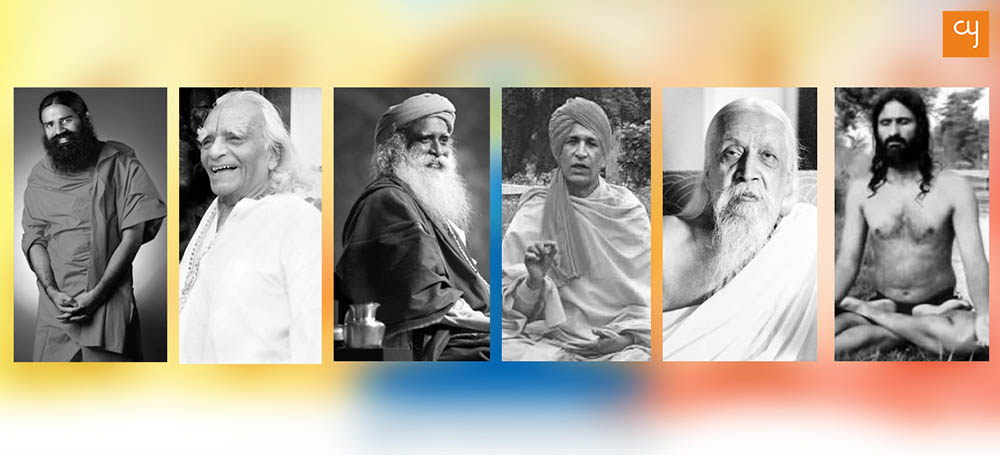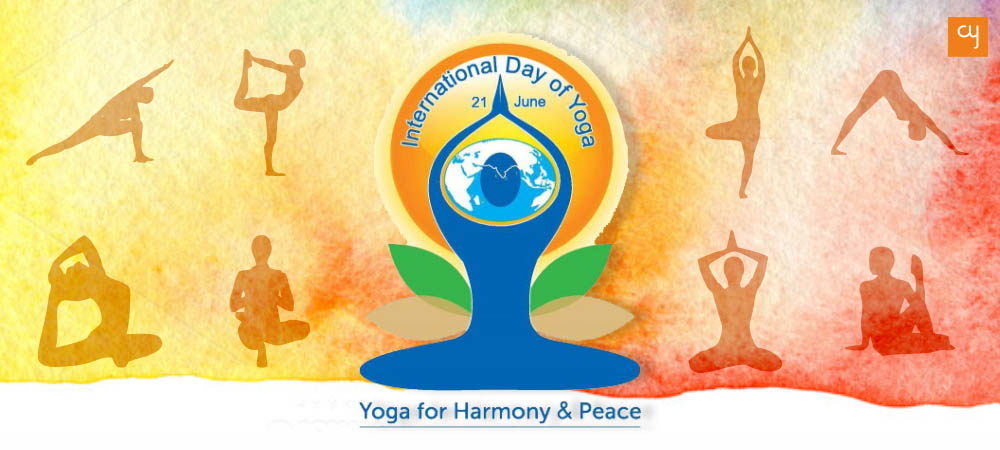With the third International Yoga Day – on June 21st– being round the corner, Creative Yatra discusses how modern day Yogis have popularised Yoga over the years. Know how the science came into existence and how different Yogis preached their unique Yogic methods to seekers.
The significance of choosing June 21st as the International Yoga Day is quiet interesting. For half the year, starting from December 21st to June 21st the Northern Hemisphere is inclined towards the Sun, which is known as ‘Uttarayan’. The Northern solstice is the moment when the sun reaches its highest position with reference to the North Pole. This makes 21st June the longest day in the Northern Hemisphere. Similarly, during the June Solstice, the North Pole is farthest from the Sun, making 21st June the longest day in the Northern Hemisphere, and it also marks the beginning of ‘Dakshinayan’. In India these two events are known as ‘Makar Sankranti’ and ‘Kark Sankranti’ respectively. Yogic folklore suggests that these two celestial events have a strong bearing on earth and, naturally, on earthly beings, augmenting their transformation potential. Hence, June 21st is marked as the International Day of Yoga.
Along with the Buddhist chanting of Ladakh and Sanskrit Theatre Kuttiyattam, Yoga is considered by UNESCO as an Intangible Cultural Heritage of Humanity now. The history of Yoga dates back to the sixth or fifth century BCE and has been mentioned recurrently in the Hindu Scriptures – the Upanishad and Vedas. Adiyogi or Shiva is said to be the creator of Yoga, but he was far too ecstatic to document it. The super-human who did draft the principal 196 aphorisms in the Yoga Sutra – and he was super-human as he possessed the knowledge of mathematics, astronomy, and language, which is a rare knowledge cluster found in a single human being –was the scholar-sage Patanjali, during 400 CE. Though an excellent piece of literature, as well as of science, the text faced circumstantial oblivion for 700 years. It was Swami Vivekananda who revitalised the essence of the Yoga Philosophy in the late 19th Century and introduced it amongst the people through his book Raja Yoga (1896).
The Sanskrit term योग, which is called as Yoga in our modern dialects, means ‘union’ in English. The very nature of its etymology implies that Yoga can always unify with one’s own knowledge and perspective and proliferate. The process by which Yoga is updated over the years is never ending because it is a study and a science, not just a skill or a ritual. The benefits of Yoga are not limited only to physical training, brought about by the bending of bodies. The practice has a huge influence on our minds and energies, nurturing a state of sustainable well being through meditation. Yoga is a tool to uplift our inner consciousness, control our senses and live a life full of prosperity. As the scripture, Bhagavad Gita states in one of its verses, “Yoga is the journey of the self. Through the self, to the self.” Maestros or Gurus have been involved in spreading this science of human well-being since thousands of years. Here, we discuss a few who adapted this ancient technique in the contemporary era for the benefit of all.

Sri Aurobindo, Founder of Sri Aurobindo Ashram
A nationalist, philosopher, yogi, guru, poet, and freedom fighter, Sri Aurobindo took active part in the Indian Independence Movement. He studied Indian Civil Services in England, but soon took to the spiritual path after he attained a realisation in Jail during his imprisonment at the time of the freedom movement. This prompted Aurobindo to retire from his political career and he founded Sri Aurobindo Ashram in Pondicherry, with a few disciples, in 1910. He introduced the concept of Integral Yoga, which differed from the usual principles of the Yoga. Aurobindo explained that it “does not proceed through any set mental teaching or prescribed forms of meditation, mantras or others, but by aspiration, by a self-concentration inwards or upwards, by self-opening to an Influence, to the Divine Power.”His theory was that “all work is yoga” and that a true Yogi does not escape from the world to pursue the spiritual path, but that he/she channels Yoga through the work he/she does. A movement that began as a building has now grown into a town called Auroville, with thousands of disciples all practising the Yogic life taught by Sri Aurobindo.
BKS Iyengar, Founder of Iyengar Yoga
One of the most reputed civilians of India, and ranked amongst the 100 most influential people in the world according to Time Magazine (2004), BKS Iyengar has been honoured with the Padma Shri, Padma Bhushan and Padma Vibhushan by the Government of India for his flawless contribution in escalating Yoga’s position as a lifestyle tool in the layman’s milieu. He has prepared 200 classic yoga poses and 14 different types of Pranayama (breathing practices) based on Patanjali’s eight steps of yoga – which include self-discipline, breath control, concentration, etc. culminating in connection with the divine –which were undoubtedly practised by Swami Vivekananda.
Iyengar also developed and involved props like belts, blankets and blocks in his practices which had never been done in the history of Yoga.
Baba Ramdev, Founder of Patanjali Group of Institutions
Renowned as the stakeholder of Patanjali Ayurved, the fastest-growing consumer packaged goods company in India, founded in 2006, Ramdev became a household Yogic name after airing regularly on the early morning Yoga slot of Aastha TV in 2003. He became the modern brand ambassador of Yogic culture and propagated it as a remedy for many diseases, since he claims that it was Yoga that cured his paralytic body in his youth. Ramdev is also the founder of Patanjali Yogpeeth, possibly the largest Institute in the world that is working on development and research of Yoga and Ayurveda (Indian Medicinal System) across India, as well as abroad.
Bharat Bhushan, founder of International Yoga Festival
“Yogi Bano Upyogi Bano,” (Be a Yoga practitioner, be useful) said Bharat Bhushan, a vegetarian, body-building Yoga teacher. Honoured with the Padma Shri in 1991, he became the first Yogi recipient of the National Award. A human being with international influence, his initiative Jago Bharat Dhyan Yog Andolan, which partnered with Zee Network, initiated Yoga camps to inculcate Yoga as a part of the urban lifestyle, following in the steps of BKS Iyengar. Much before the International Yoga Day was announced on June 21, 2015, Bhushan initiated the International Yoga Festival in 1989 at Rishikesh, which gained international popularity and received thousands of participants from across the globe.
Yogi Haider, Founder of Yoga Pakistan
In a country where more than 95-98% of the population is Muslim, Yogi Haider has more than 10,000 students learning Yoga under his projects Yoga Pakistan and Way of Nature. Despite several attacks on his training centres by extremists, who refer to Yoga as a practice of Hindu culture, Yogi Haider has been teaching it since 1994 in Pakistani cities like Islamabad, Karachi, Rawalpindi and Lahore and reports suggests he uses ‘Allah hoo’ instead of ‘Om’ for chanting while practising yoga. Haider backs the science by saying, “Yogi Patanjali was born in Pakistan around 3000 years back and the art was invented here. I want to spread the message of Yoga across Pakistan, just like Ramdev Baba did in India.”The Face of Yoga in Pakistan is married to a Yogini, who actively participates in the Yoga Pakistan project.
Sadhguru Jaggi Vasudev, Founder of the Isha Foundation
Mystical guru Sadhguru has played a significant role in making Yoga go digital with social media and mobile applications, while maintaining its true essence. The Padma Vibhushan-honoured Yogi runs Isha Foundation, a non-profit organisation that spreads the word of Yoga all across the globe through social and community development activities like tree plantations. The foundation has advocated the inclusion of Yoga as a part of school curriculums. Sadhguru has been a speaker at the United Nations World Peace Summit in 2000, and several times at the World Economic Summit, has authored more than 50 self-help books, and he discusses on subjects as varied as sports, economy and entertainment through thoughts about life balance, positivity and spirituality. Through its public welfare and environment protection activities, Isha Foundation has garnered more than 5 million volunteers today. Their belief in living a Yogic way of life, while engaging in worldly activities, has made Isha one of the most publically run Yogic organizations in the world.
Through reading about such influential Yogis, we believe that there is one universal message that they deliver – that Yoga has tremendous power to transmogrify our physical and mental selves. And the only way to live happily in the outside world is to be happy and in harmony with your inner self. Happy International Day of Yoga and keep exploring!
Yatra Archives

 How Tulika Books is creating impact in children’s lives through picture books
Nandini Varma
How Tulika Books is creating impact in children’s lives through picture books
Nandini VarmaAug 21, 2019
A children’s book about a boy who feels like a girl. And about a child brought up by grandfathers. These are some of the stories published by Tulika Books, who have been making children’s picture books since 23 years. Little…
 Dalgona Coffee: A worldwide social media trend about home-made café experience
Harshil Shah
Dalgona Coffee: A worldwide social media trend about home-made café experience
Harshil ShahApr 2, 2020
While the lockdown has ignited various trends on social media, one that has received a major global following is #DalgonaCoffee. With thousands of posts on its name, here’s all you need to know about the Dalgona Coffee wave. I first…
 Leonardo, Michelangelo, Raphael and Donatello—Artists or Teenage Mutant Ninja Turtles characters?
Harshil Shah
Leonardo, Michelangelo, Raphael and Donatello—Artists or Teenage Mutant Ninja Turtles characters?
Harshil ShahNov 5, 2019
Did you ever wonder where the Teenage Mutant Ninja Turtles’ characters got their names from? Well, your search is complete. Here is a brief introduction of the artists from whom the creators of TMNT took inspiration. Teenage mutant ninja turtles,…
 The call of the mountains: orthopaedic Dr Yatin Desai’s advice on trekking
Himanshu Nainani
The call of the mountains: orthopaedic Dr Yatin Desai’s advice on trekking
Himanshu NainaniMay 24, 2019
In this piece 64 year old Dr Yatin Desai, shares with CY his inspiring story of how to scale towering mountains with utmost ease and how this life adventure activity can shape human character and health. Chances are high that…




